The Market’s Positive Signs: Which Way Are We Headed?
2023.07.31 05:23
Fortunately, for the past few months, we have provided much more positive input in your investment game plan and have backed these constructs with countless charts and graphs. In looking back, probably the charts from Ryan Detrick of Carson have been the most accurate and helpful as they showed what the market tends to do after being up 10% in the first few months.
Fear continues to dominate some of the financial publishing rhetoric.
I remain baffled and amazed at the large swath of writers who continue to offer a negative view even while the market makes new 52-week highs weekly. Many of these prognosticators were correct in 2022, consistently warning that we were about to see a bear market. They earned some credibility, and readers began to hang on to their every word. But many have been wrong in 2023!
The problem with their numerous negative theses is that the stock market (and earnings) tend to go up 70% of the time. Additionally, as we have pointed out here, week after week, we are in a pre-election year. The bias for the 3rd year of a Presidential term has been positive (since 1950 100% of the time). See chart below (chart which I helped create from my old firm, Atalanta Sosnoff Capital)
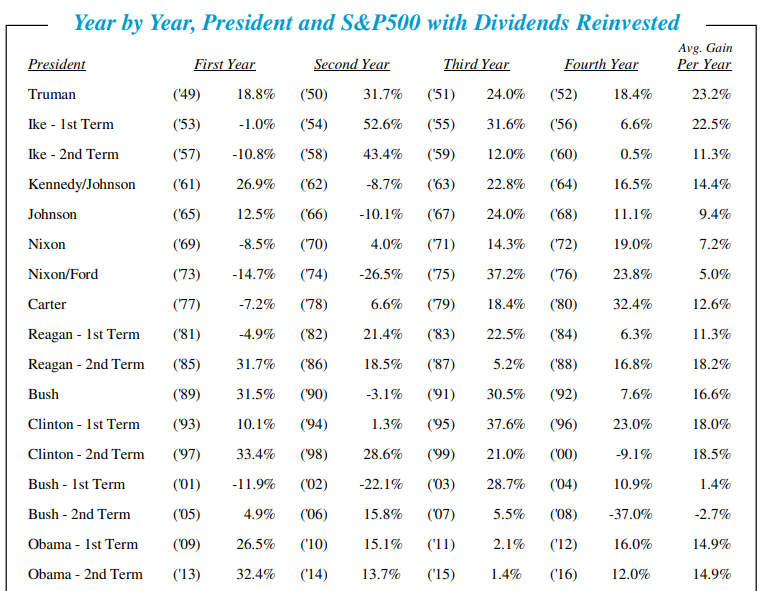 President and SP-500 with Dividends Reinvested
President and SP-500 with Dividends Reinvested
The Signs Remain Positive
No matter how much fear the writers, talking heads and negative financial publishers say, the market continues to grind higher. More importantly, the underlying health of the market has continued to improve these past few months.
Yes, we may see a much-needed consolidation or correction soon, but most of the signs suggest that it may be shallow. Additionally, signs of a recession have not (yet) MATERIALIZED and while we may be pushing that off into some future moment (like 2024), this past week’s GDP of 2.4% growth handily beat the 2.0% expectations. See chart below:

Jay-Kaeppel-Tweet
It is important to remember there is approximately $4 trillion in infrastructure, CHIPS, and anti-inflation bills were passed during 2021-20222and much of that money has not yet found its way into the economy.
No matter how much the Fed raises rates, how much Quantitative Tightening the Fed imposes, we are still awash in new monetary stimulus coming from the Federal Government. Add to that, existing COVID money that remains in the economy, and you have the recipe for a continuing tight job market while consumers are still actively spending. Retail and consumer spending are holding up some parts of the economy.
Here are other signs that the stock market is on solid footing: (thanks to LPL for producing great research this past week).
- Broadening participation. The narrow leadership (the magic 7 stocks) no longer holds true. The Equal Weighted (RSP) is now closing the gap:
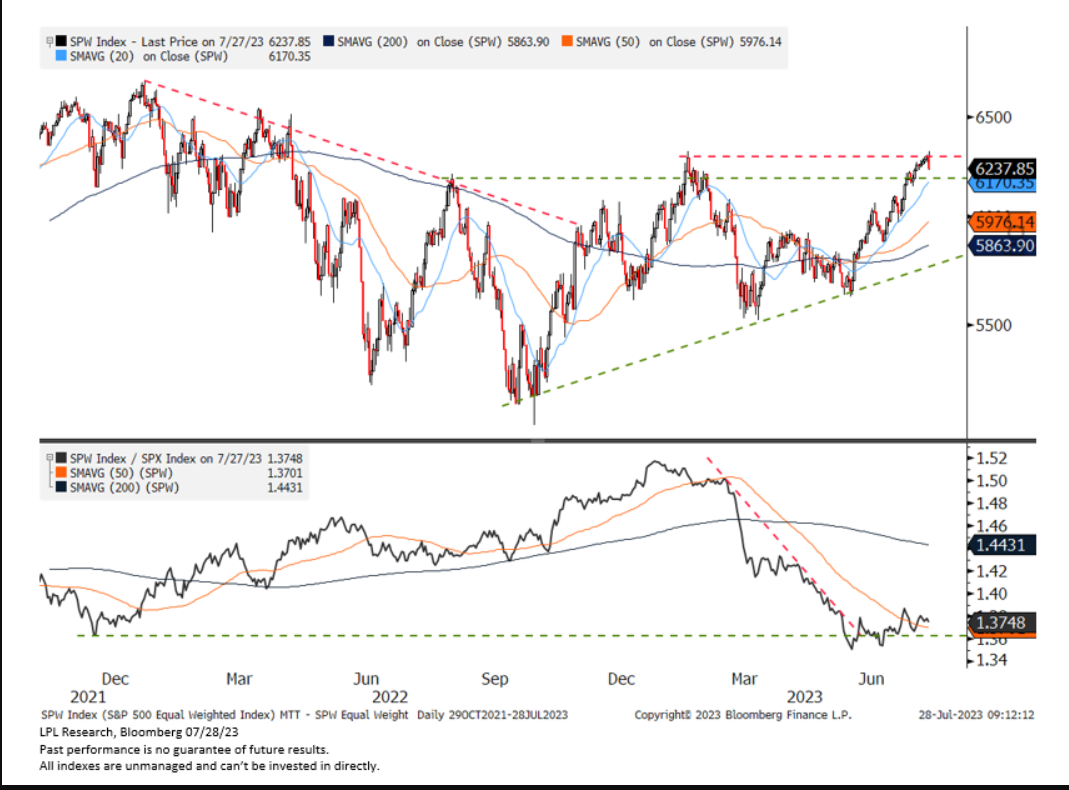
- We went from bad breadth to good breadth.
The average stock in the S&P 500 is now trading above its 200-day moving average. This is a sign that breadth has improved and is positive. Should we go into a correction, it will take a lot to start knocking these stocks down when the breadth is so positive. See each industry group below with a comparison of November 2022 to now (July 2023):
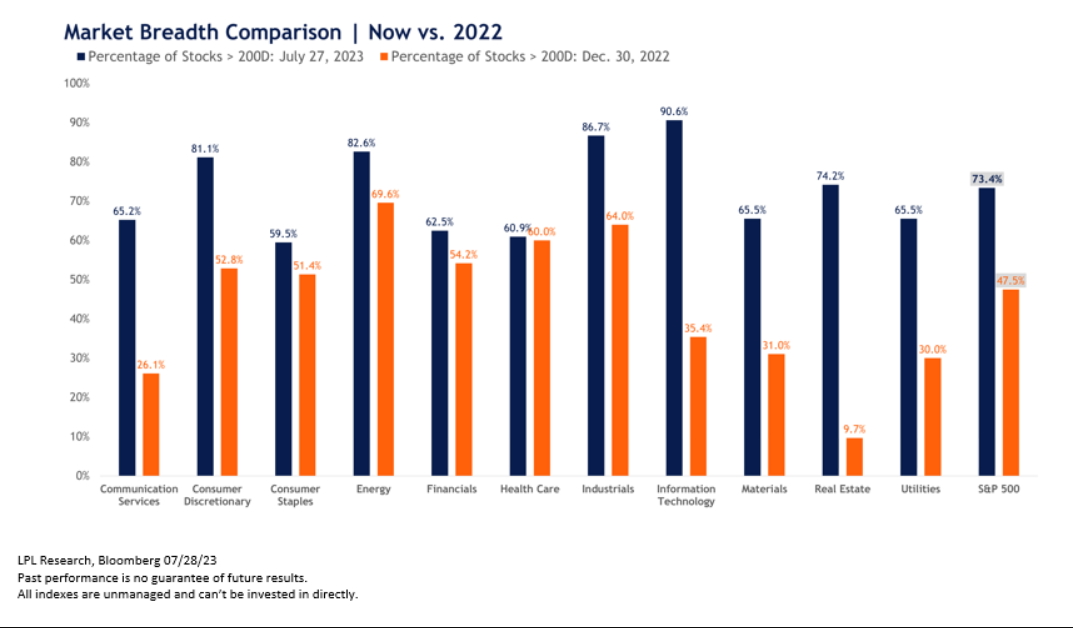 Market Breadth Comparison
Market Breadth Comparison
Below, we also provide a view of the S&P 500 index (all 500 stocks) above the 200-day and 50-day moving averages. These charts continue to show a positive and expanding bias… We consider the positive blue slope to be a guide to take a position of “risk-on”.
Charts for the S&P 500, DIA, NDX and the NYA will soon be available in the MarketGauge Pro offering an enhanced Big View Pro.
# of Stocks in the S&P 500 above their 200-day moving average:

SPXA200R-Chart
# of Stocks in the S&P 500 above their 50-day moving average:
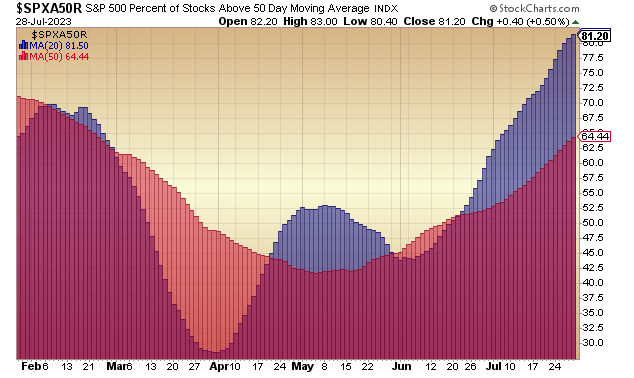
SPXA50R-Chart
There is little doubt that the number of stocks above these vital moving averages is getting a bit stretched or overdone (as compared to similar periods in the past). A period of consolidation or even a correction may be helpful to take some of the “froth” out of the market.
- The Advance-Decline line remains positive and is showing good health for the markets as well.
The chart below shows the two-year cumulative advance-decline (A/D) line for the SPX. The line is calculated by taking the difference between the number of advancing and declining stocks in the index for a given trading day and adding that difference to the prior day’s value.
A rising A/D line is indicative of positive market breadth (as shown above as well) as the number of advancing stocks is outpacing the declining stocks.

- Participation is Global.
The U.S. equity market is not the only place to find a bull market. Global (including emerging markets) are also doing well, with several major indices recently hitting important new 52-week highs. This includes the MSCI All Country World Index ex-USA. This index is comprised of over 2,300 stocks (large and mid-cap companies) doing business in 22 of 23 developed markets AND 24 emerging market countries. As shown below, the index recently broke out from a long triangle to hit a new 52-week high:
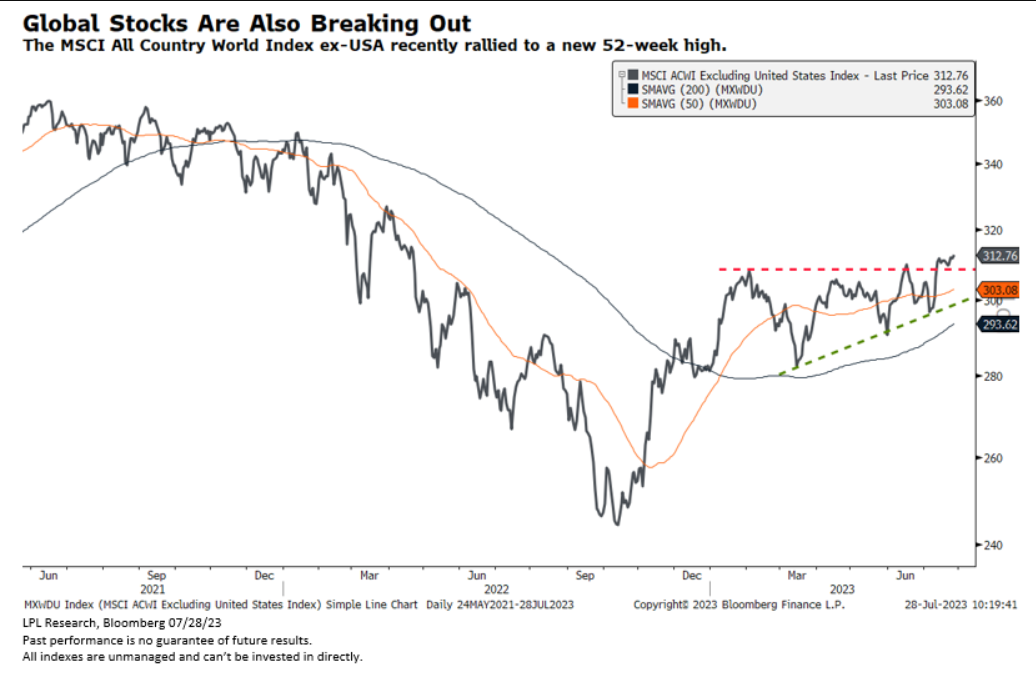
- Semiconductor stocks recently broke out as compared to corporate bonds.
The semiconductor industry is the lifeblood of the technology and AI revolution. Mish likes to monitor “sister Semiconductor,” an important component of her Economic Modern Family, as one indication of the health of the economy and the markets.
Today, you can find these chips in just about everything manufactured, and therefore, they give an indication as to how well the products they are in are selling. (Friday, Intel (NASDAQ:) was up big on a recent earnings surprise, another welcome indicator for this technology and AI fueled rally). See recent semiconductor vs. corporate bond chart below:
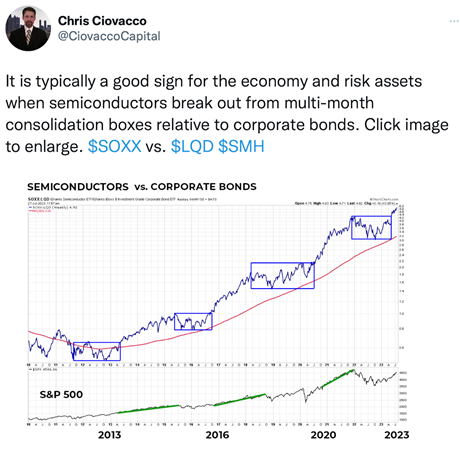
Chris Ciovacco Tweet
- Bullish investor sentiment is pulling new $ into the markets.
In this column for the past few weeks, we have discussed how investors are investing based on FOMO (Fear of Missing Out). These investors have been putting money in the stock market that had been sitting in money market funds. Estimates are that money market funds are still awash with over $5 trillion parked on the sidelines that is not yet in the market. (This could make the market rally much further especially if these investors really feel like they are “missing out”).
As mentioned above, fear is a powerful and negative influence. Yet investor sentiment (as measured by the AAII-American Association of Individual Investors) remains bullish (positive)
Should we enter a correction later this summer, this could help buffer the downside. See both bullish and bearish investor sentiment charts below: (notice the high correlation of the S&P 500 performance to the Bullish/Bearish investor sentiment indicators).

AAII Bullish Sentiment
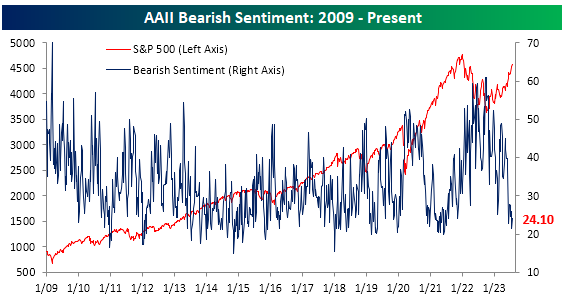
AAII Bearish Sentiment








